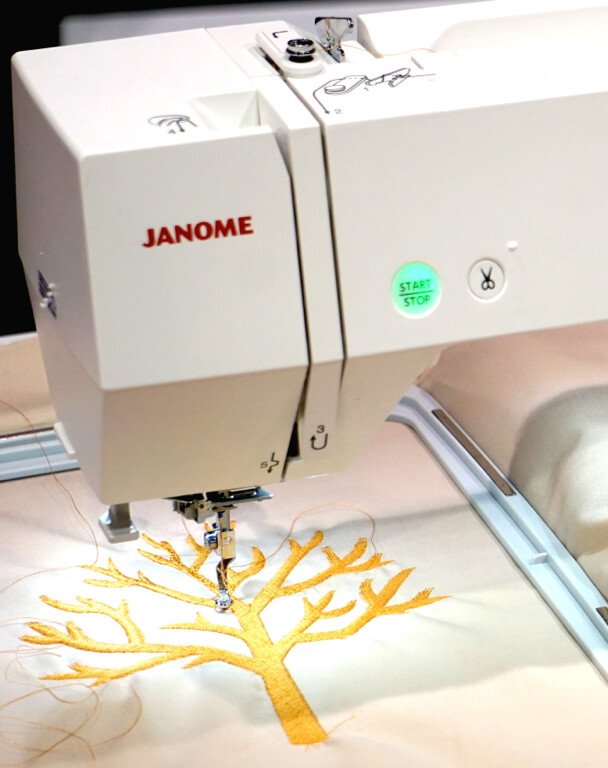Hand vs Machine Embroidery: What are the Differences?
You might imagine that the only difference between embroidery done by hand and that created by machine was the method used. There is also the notion that items embroidered by hand have a greater value and are more sentimental than those embroidered by machine. But when you get down to the details, there are numerous other differences as well. Here we will explain the differences between hand vs machine embroidery.
Hand Embroidery
Hand embroidery begins with a piece of fabric tightly stretched over a wood or plastic hoop. From the time the first stitch is made, the crafter will make decisions about the color of thread and the type of stitch used. As the work of art unfolds, they may change their mind about which choices will produce the best results.

Hand stitching results in a unique piece of work every time it is created. Even if the exact pattern and thread colors are replicated, there will be subtle differences in the way the stitches are made and the area where colors and shading are used.
The type of thread used for hand embroidery differs from that used in embroidery machines too. Hand embroidery thread is stranded and comes in silk, cotton, or wool. The strands may be separated to make some areas flatter or more delicate, or combined for bulkier areas. This process gives the embroidery more texture and distinction between various areas.
Machine Embroidery

The process of machine embroidery is much more exact and uniform than that of hand embroidery. Although the crafter can choose from thousands of designs and determine the thread colors they want to use, there is no room for editing along the way. Pre-designed patterns are loaded into the machine and the exact same pattern is produced every time. Machine embroidery is like running papers through a copy machine; each piece is identical to the original.
The thread used in an embroidery machine is heavier than what is used for hand embroidery and it is typically made of polyester, metallics, or rayon. This thread is not stranded and cannot be separated to change the texture of any part of the embroidery. The same thickness will occur throughout the pattern, giving it a flatter appearance.
So Which Is Best?
Hand embroidery and machine embroidery are two very distinct methods of stitching and each has its purpose. It just depends on your end-goal.
A hand embroidered work is more artistic and personal, making it the ideal way to create a special heirloom or a source of pride for the embroiderer. The process requires an investment of time and heart to include the details that will make the embroidery stand out. Depending on the skills of the person with the needle, hand embroidery can result in a lifelike piece of art that will make a unique display to be enjoyed by all.
Machine embroidery, on the other hand, produces more professional looking work in a fraction of the time it takes to do something similar by hand. The broad selection of designs available today provides everything that is needed for personal use and for small businesses as well.
Some home embroidery businesses focus on monograms while others might embroider men’s caps. These are all uses that require the professional results of an embroidery machine.
The same is true for sewers who want the versatility that an embroidery machine brings to their craft. They may want to add decorative detailing to home items like placemats or curtains, or add cute animals or cartoon characters to their children’s clothes. Even the smallest embroidery detail adds interest and value to all types of everyday items.
If embroidery is a new area of interest for you, your lack of experience doesn’t mean that you are limited in your choices. Every person who has become an artist with a needle and thread had to start with their first piece.
If you prefer machine embroidery, no previous embroidery experience is required. Today’s embroidery machines are virtually decision-free! Once you decide what you want to embroider and in what colors, the machine will do the rest.

